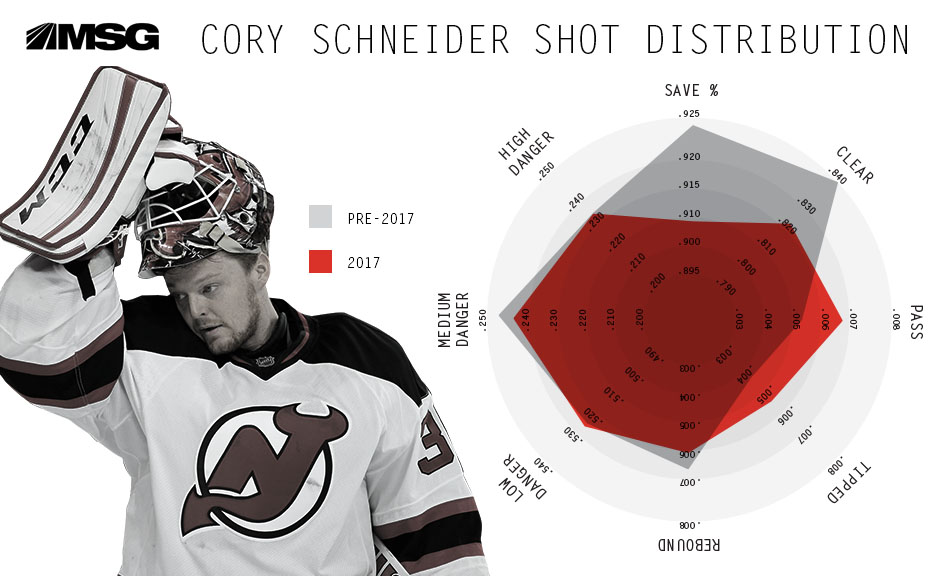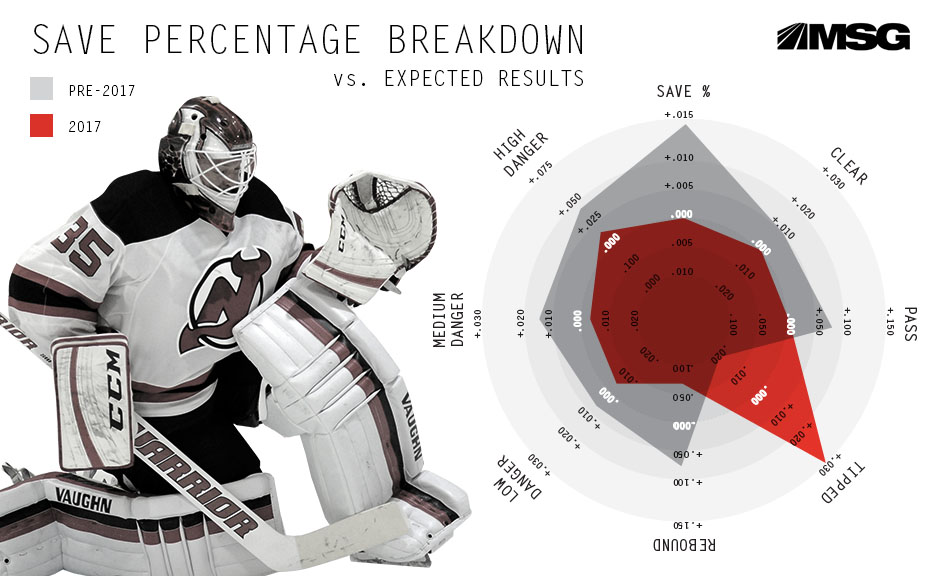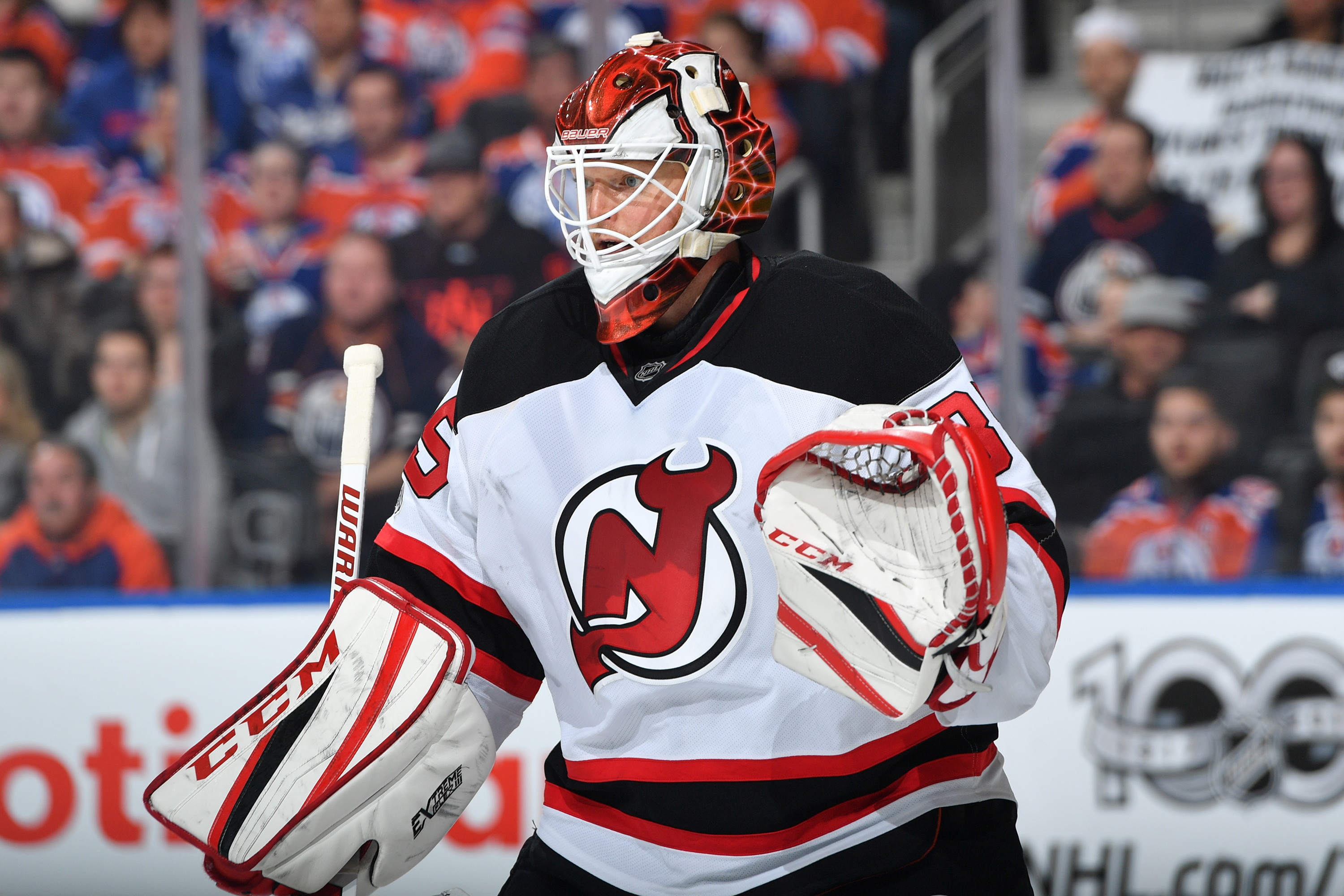By Chris Boyle
Recent results around the NHL would lead a casual observer to believe the high-scoring days of the 1980s are back.
Teams are engaging in run-and-gun games and elite goaltenders in the NHL are not immune. Both Henrik Lundqvist and Carey Price recently surrendered seven goals against in a game over the last week. Price has only surrendered seven or more four times in 481 games and seven or more goals against is something Lundqvist hasn’t experienced since the 2009 season.
Cory Schneider has also been affected by high scoring around the league. Through 35 games, Schneider has given up five goals four times, the same amount that he surrendered in the two previous seasons combined. When a goaltender’s save percentage suffers a significant decline, I usually look towards the environment for answers.

If we look at Schneider’s previous sample, we see a goaltender who consistently delivers above-average results. In comparison to 2017, we see very little difference in the shot locations. His clear-sight scenarios have dropped from league average distribution, but it isn’t significant enough to explain his half-season statistical dip.
When we break down his save percentage, we see where his biggest issue lies.

When we look at his actual performance, we see him struggling outside of a strong performance on tipped shots. There isn’t much of a reason for concern in the pre-shot categories because half-season data is such a small sample. Where Schneider is struggling is on clear-sighted looks. It is a category that has a huge influence over a goaltender’s save percentage because, on average, it makes up 85 percent of all shots faced. Even if we isolate just clear-sighted shots based on location, Schneider is facing a slightly easier workload than previous seasons. In order to find answers, we have to dig slightly deeper.
When we look at the goals that Schneider has surrendered without pre-shot movement, we can see that his sightlines have been compromised. (I don’t include screened shots in my data sets because I found sightlines can be open to biased interpretation and with all the variables involved in defining an environment, I don’t want to stretch my data sets to thin.)
Analyzing video, we can see the Devils have struggled to clear shooting lanes for him, particularly on the penalty kill. We can see what Schneider has had to deal with on this early-season Sami Vatanen’s power-play goal.
With the defender and Kesler in front of Schneider, all it took is one quick look around the wrong side of Kesler to be compromised by a quick release. If I remove all the goals that were the result of pre-shot movement, half of the remaining goals have involved players layering in front of him. Not all are clearly defined screen shots, but there is definite traffic forming through his sight lines.
It would be easy to expect a regression back to the elite goaltender we expect from Schneider over the larger sample and I do expect all his pre-shot movement categories to do so this season. I do think compromised sightlines are a defensive issue for the Devils. It looks to be more of a structural deficiency and if they cannot minimize his exposure to this type of layering then I expect Schneider to begin to regress to his typical results.

